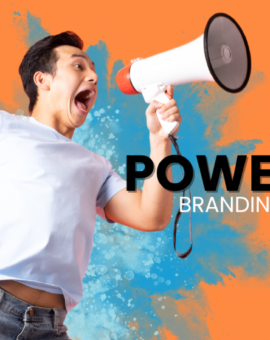How to Optimize Your Shopify Store by Improving Image Photography
Customers make purchases based on what they see. Nearly half of all online store visitors can spend less than 14 seconds looking at a product page before moving on. Consequently, each Shopify marketer should employ eye-catching product images in their campaigns.
Shopify is the third-largest e-commerce platform in the United States, trailing only Amazon.com and eBay.com in terms of popularity. As a result of its low pricing, flexibility, and user-friendly interface, this platform is suggested for a wide range of suppliers who are just beginning to understand the value of visual products, mainly product digital photography.
To help you improve your Shopify product photography, we’ve put up this guide.
Choose the right image size and dimensions
Is the internet site you’re utilizing likely to impose its constraints on factors such as image size, quality, or colors before you even begin producing electronic cameras? The last thing you want to do is photograph a high-definition, formed rectangular spread, only to have it downsized into a cut-off box and grainy when you shrink it down.
Your product photographs can be as large as 4472 × 4472 px. However, Shopify requires that they be less than 20 MB in file size to be uploaded (20 megapixels). There’s no need to limit yourself to that size for all of your photographs.

To avoid slowing down your servers or making your images look blurry on mobile devices, you should avoid images with more than 4,000 pixels. Alternatively, if a photo is less than 800 x 800 pixels, the zoom capability will be disabled, frustrating customers who want to see an item’s tiniest details.
Shopify recommends 2048 x 2048 pixel square item photographs are the finest brightened up; square images are excellent, consistent, and long-lasting. All of your pictures should be published as JPEGs to preserve their quality. Make sure you maintain a constant component proportion. According to Oderpy, a Shopify firm in London, using high-quality product images helps every merchant boost their conversion rate by 2.2%.
Keep the focus on the product
When deciding on props and backdrops for your product photography, remember that your primary purpose is to enhance the product’s attractiveness, not merely to produce a beautiful picture. Consumers are more likely to purchase a product if presented visually appealing: The “product looks to be more numerous than the photographs” is the reason for 24% of online purchase returns.

A simple white backdrop with a single focus point on the merchandise is what you’ll find most often in product photos for online stores. Keep in mind, even with this simple set-up, that the best images for your online store will be those that show your products from various perspectives.
Using non-white backdrops or props is OK as long as you keep them simple and related to the subject matter of the shot. Because many props are larger or brighter than their object or have unusual tones, they may draw more attention away from it than necessary.
Focus on the most critical details.
What is the unique selling point of your product? The knit of a sweater, the clock digits on a watch face, or the key-board arrangement of a laptop computer should all be highlighted in Shopify digital product photography. These are the kinds of details that customers care about, and that might be the difference between buying from your shop and one of your competitors.
You’ll need to take images of the product that show off its best qualities to do this. You may advertise a travel cup by showing it in a rucksack or briefcase alongside vehicles to demonstrate its practical size. If you’re promoting a collection of things online, make sure they’re visible. It’s also a good idea to provide images of fashion jewelry, hoping that potential customers will be able to see the size and shape of the jewelry.
Pulling it all Along with each other
The style of in-studio platforms creative item photography is that an innovative studio will work to consider the desired brand name aesthetic, state of mind, and moreover target audience for your products, while lowering the labor and likewise anxiety, and stress on your side. Specialist electronic photography workshops have props, backgrounds, lights, in addition to very high-quality equipment accessible along with understanding more precisely just how to use the product, which suggests This doesn’t require to be an expert photographer to obtain beautiful photos.
Use professional photography equipment
Is this a depressingly large number of things to remember? You may significantly improve Shopify product photography by just limiting the options available. An expert option that can be purchased as a single package will cover pre-production to post-production.
Studio software will likely have marketing research and branding approaches available to build your store’s aesthetic style, which is an additional benefit of working with a professional workshop. Anyone may develop a trademark search for your internet brand name by working with a large group and studying demographics. They can keep structured style guidelines for future photoshoots.
In addition, working with experts and specialists saves you time and energy—they can capture the perfect appearance while you focus on other aspects of operating your Shopify online business.
Set a good lighting
With digital and electronic cameras, a lot is going on!” First, we’ve heard the phrase “a hundred times,” and then there’s an aspect of “lighting.” Even if you have a limited budget for a digital camera, a well-lit image can still appear fantastic, whereas poor lighting can degrade even the most costly equipment. Here are a few fundamental tips to help you get the most out of your product photography and the lighting.
Pick the best sort of light
It’s possible to imagine your items using either all-natural light or workshop (synthetic) lighting.
Turn off all the lights in the area and work in the sunlight, whether outside or near a window. Early mornings and early nights are when you’ll get the softest natural light; however, you’ll need to be careful when photographing in full sunlight, which might appear harsh. The best days are a little cloudy but not wholly overcast.
Products relating to the outdoors, people, food, and various other aspects of daily life benefit significantly from the use of natural ingredients. Indeed, this is the most significant part of the story? You can’t put a price on sunshine.
The use of artificial or feature-based in-studio lighting can be helpful if you have products with precious information, such as fashion or jewelry that is now in style, or you need to release many items on short notice and without having to worry about weather conditions.
Consider the background while using any type of lighting. Detailed back stories and scenarios are available for use in the studio. Using a roll of pure white butcher paper or poster board from a local art store, you may create a shared white history.
Use as many sources of light as possible
When products are light from at least two distinct angles, they look significantly better. Using reflectors and diffusers, you may move the light around if you’re working with natural light.
A conventional lighting package is entirely sufficient for beginners when shooting with artificial workshop light. Avoid heavy shadows by orienting the light source diagonally to your product rather than directly in front of it.
Why Improving Product Photography can Help Optimize Your Shopify Store?
Better Customer Shopping Experience
It’s terrible for a customer’s experience to have photos that are too small or too large—or even worse, images of all different proportions. Your ideal competitor for a user’s transformation is a thin image. You must work with a company that offers a first-rate customer service experience. It is claimed by Google’s trademark and digital marketing managers: “The pandemic’s increased reliance on electronic devices and products means that consumers will become more adept at responding to adverts and will want a better shopping experience. As a result, there must be no broken links; confusing CTAs; sluggish store pages; or desktop-only websites.” For the most part, customers now expect a seamless online buying experience, and they’re fed up with businesses that go out of business.
Optimized Images
Slowing down pages is inappropriate. The most egregious offenders when it comes to lowering a website’s size are those who allow media data to be accessed (also known as large pictures and videos). This does not imply that reducing the size of photos by shrinking or compressing them is the solution.
Capabilities for Zooming In
If your image is both large enough and of good enough quality, consumers can zoom in for more detail, but it’s also not so large that it takes up too much space and slows down the flow of traffic.
High-resolution photographs that retain their authenticity when zoomed in are an essential part of having the ideal picture size in your Shopify store Images that are too small or large might be distorted when we focus on them for long periods.
Conclusion
You won’t have to worry about your eCommerce photos for hours now. If your product images aren’t showing up in Google’s image search results, you probably know a few image SEO tactics. You’ve mastered the art of using alt characteristics to their fullest potential. You understand the difference between file formats and when to use them.
Do you want to learn how to start your own eCommerce store? Check out our article about How to Start A Successful Online Shoe Retail Store.
About the Author:
Wail Amrani is a Shopify marketing expert, eCommerce consultant, and Content writer.
He has been leading digital growth for both online and retail brands for over 7 years. Prior to co-founding Oderpy LTD, he was digital marketing manager at Shopify Plus and Shopify expert at Shopify ( for more than 7 years).


